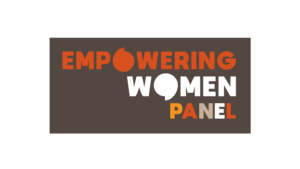
Peer Research: Cost of Living Crisis
12.12.2023
We interviewed people in our networks and communities to find out about their experiences of the cost of living crisis. We were also interviewed ourselves as part of the project.
The questions we asked were finalised by a subgroup of the Panel and included the changes women and girls were noticing since the cost of living crisis had started and what was helping.
Why the Peer Research project was important
It was really important to make room to tell more stories, not just those of the Panel members. It was a simple, straightforward way for us to round out the cost of living topic and it would work well for other topics that the Panel will discuss in the future.
It was interesting that there were common themes, even though we spoke to people with vastly different life experiences. One of the main themes was easy access to information and a one stop shop approach to getting all the information you needed.
What we learned
One of the main things we learned was that one size does not fit all. Women and girls are not one big group that is all the same, there are lots of things that make us different from each other. These are things like whether we’re parents, our race, our faith, whether we do paid work, our caring responsibilities and whether we have disabilities or long term health conditions.
It doesn’t work if you try to fit a person into a box; help has to be designed for each person. The women and non-binary people we spoke to wanted to be asked what would help them, not just assumptions made about the best solutions.
We all learned new skills by being involved in the project, too. Some of us had never done an interview before, some learned new IT skills when we recorded our conversations and others read out quotes from real people at our presentation to the National Advisory Council on Women and Girls. Some of us gained a new respect for women and how they just keep going, regardless of what they’re going through. We’re keen that women are not viewed as victims
The real voices we heard were very powerful and led to deep, human connections. They brought the findings from the research to life and showed just how much some people are struggling through the cost of living crisis. It helped us see that everyone’s experiences are valid, including those who have only had to make minor changes to cope with the rise in costs.
Things that would help
Although there were common themes, there were differences in what women thought would help. Some said that direct cash payments would have the biggest impact, whereas others didn’t want to feel that they were relying on handouts. Throwing money at a problem doesn’t always work.
Interviewees came up with some easy, cheap and sometimes free suggestions that could help communities in the cost of living crisis. These included community food dinners, clothes swaps, repair cafes, and school uniform schemes. These could all take place in a warm space with food available so that people felt they weren’t just receiving something for free. They could contribute, too.
Next steps
We learned a lot about how the cost of living crisis is affecting different women across Scotland but there were some things we would have liked to explore more. We would want to know more about women who weren’t able to work because of childcare costs, as well as women taking on more work because of the cost of living.
We would also want to find out more about the intersectionality we talked about. There are layers of barriers for some groups of people that make the cost of living crisis even harder. We would want to know more about the stigma around asking for help in some minority communities and the discrimination ethnic minority women can experience when applying for jobs because of their names.
There are other situations we’d like to know more about, such as the extra costs for some women, like unpaid carers, those with disabilities and women living in more rural areas. There are also many women who don’t access support for a variety of reasons, whether that’s due to transport issues, worries about personal safety or not leaving their homes because of abuse or cultural expectations.
Read our Cost of Living executive summary here.
Read our Cost of Living final report here.
